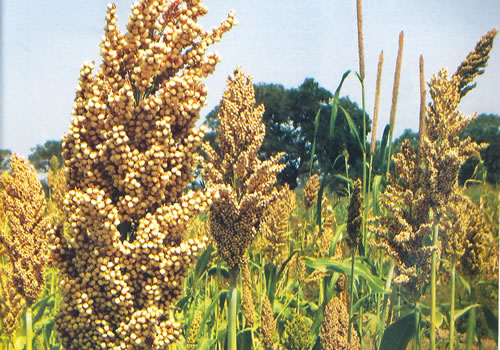Sorghum Beer is a cross-cultural experience. In the USA, most beer is crafted with barley, wheat, or oats in varying proportions, but rarely do brewers step outside the box to experiment with grains indigenous to other countries. What was learned at Siebel or Weihenstephan remains the foundation of their recipe – Reinheitsgebot, with small variations. European Pilsner calls to them, with the distinctive floral spiciness of Noble hops. They might even brew a Scottish Wee Heavy, or English Pale Ale.
And then there is Belgium…
When Beer Hunter Michael Jackson traveled to Belgium thirty years ago, he began a crusade of familiarizing himself, and the world, with a plethora of styles on the verge of extinction. Lambic, gueuze, biere de garde, and saison; framboise, faro and Biere brut – all beers fermented with the dominant, uninhibited flora unique to the Zenne valley, Hainaut, Namur and Liege. Fermented in attics, beneath rafters thick with cobwebs, these distinctive beers had a soul all their own. What had been on the verge of obsolescence suddenly ascended into the heavens by virtue of the writer’s hand. So effective were his words in the international forum that Crown Prince Phillippe of Belgium found it fitting to award Jackson with the Mercurius Award in 1994.
Fast forward to 2008. The world has suddenly become smaller due to the explosion of electronic communication and effective technology. Not only have we created generic McLagers and generic McDonalds, but we have also expanded our palates to experience the authenticity of mangoes and star fruit, foods from Thailand, and India, and Madagascar. We have slowly become aware of grains such as quinoa, flaxseed, sorghum and millet. Can they be used to brew beer? What might it taste like? Distinctive, that’s what.
In the 1980s and 1990s, the Nigerian government imposed a ban on the import of barley to its own African nation. Sorghum, the national crop of Nigeria, grows easily in its hot climates and poor soils. The government was simply trying to increase economic growth within its own country. Still they struggled and stumbled with frustration. A suitable reliability on these grains had not yet come to center stage, but the backbone was firming up. Although the ban on barley was lifted in 1998, international demand and escalating cost of transportation made it impractical for use as a brewing grain. In an effort to establish a reliable supply chain of sorghum from local farmers, both Heineken and Diageo joined forces with the Common Fund for Commodities, a segment of the United Nations, in the establishment of a co-operative for rural development in Ghana and Sierra Leone.
Although the ban on barley was lifted in 1998, international demand and escalating cost of transportation made it impractical for use as a brewing grain. In an effort to establish a reliable supply chain of sorghum from local farmers, both Heineken and Diageo joined forces with the Common Fund for Commodities, a segment of the United Nations, in the establishment of a co-operative for rural development in Ghana and Sierra Leone.
The two partnered companies were so impressed with the results of the cooperative that Heineken, as part owner of Nigerian Breweries Plc, has just completed, in two years, the world’s largest sorghum malting plant in Aba in the eastern part of Nigeria. Heineken, under the names of Star Lager or Gulder, now produces beer from sorghum (either wholly or in part) in Nigeria, Ghana, Sierra Leone, Rwanda and Burundi.
Diageo, makers of Guinness Foreign Extra Stout, is moving to brew Guinness with sorghum in Nigeria, Ghana and Sierra Leone, claiming that “consumers cannot tell the difference between Guinness brewed with barley, or Guinness brewed with sorghum.”
Word is leaking into the international market that the open-minded Americans are warming up to Sorghum Beer, African culture, and the modern musicians that are associated with that culture. With the market release of Redbridge, New Grist, Sudan Grass, Bards Tale, Sprecher Shakparo, Mbege, and so many others, American Sorghum Beer is not necessarily the exclusive domain of the Celiac any longer. Although Sorghum Beer had originally been developed for those with intolerance to the protein fractions in barley, wheat, rye, spelt, and related grains, the subtle bitter-sweet characteristics of sorghum, or sorghum, millet and corn blends open up greater variety in the lively, American craft beer market.


